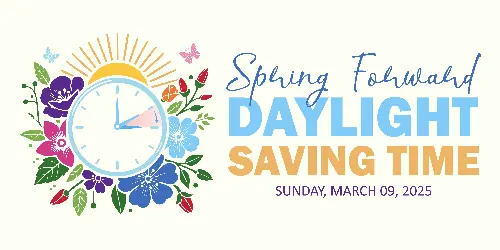As the buds begin to bloom and chirping birds herald the arrival of spring, a familiar ritual unfolds across many parts of the world: the setting of clocks an hour ahead to mark the beginning of Daylight Saving Time (DST). This century-old practice, aimed at making better use of natural daylight during the evenings, has a history as rich as it is surprising.

Daylight Saving Time's origin can be traced back to none other than Benjamin Franklin. Whilst in Paris in 1784, he jokingly suggested that the French could save candles by rising earlier to use morning sunlight, an idea he put forth in a satirical essay, “An Economical Project for Diminishing the Cost of Light.” However, Franklin's whimsical idea didn't become a reality until much later.
The true father of DST is often considered to be George Vernon Hudson, a New Zealand entomologist. In 1895, he proposed a two-hour daylight saving shift to the Wellington Philosophical Society so that he could have more daylight hours for his hobby, insect collecting. However, it wasn't until the efforts of British builder William Willett, who in 1907 published a pamphlet, “The Waste of Daylight,” that the concept gained traction. Despite his campaigning, Willett never saw his idea implemented, as he died in 1915, one year before Germany and its allies first applied DST to conserve coal during World War I.

World Wars and Energy Conservation
Many countries adopted DST during World War I and again in World War II, as it was thought to reduce the use of artificial lighting and thereby save on coal for the war effort. The practice fluctuated until the 1970s, when the energy crises motivated many countries to institute Daylight Saving Time once more, an echo of its original rationale for conserving resources.
Global Adoption and Abandonment
Not every country fell in line with the concept of Daylight Saving Time, and today, its adoption is a patchwork affair. Regions near the Equator have little seasonal variation in daylight, so the benefits are negligible. Conversely, areas farther from the Equator experience significant changes in daylight across seasons, leading many to continue the practice. In an ever-connected world, this creates an interesting dynamic where business and communication often have to account for not just time zones but also DST changes.

Physical and Psychological Impacts
The "spring forward" transition is more than just a minor inconvenience; it has real physiological and psychological repercussions. Losing an hour of sleep may sound trivial, but it can lead to increased sleepiness and disruption of biological rhythms. Studies have revealed a spike in heart attacks and road accidents following the spring transition. Nonetheless, the longer evening daylight hours are linked to reduced crime rates and increased time for outdoor activities, potentially boosting physical fitness and mental health.
Economic and Environmental Outcomes
The economics of Daylight Saving Time are complex. While some argue that it promotes energy savings, modern studies often show mixed results. The shift of human activity to the brighter evening hours has occasionally led to increased electricity usage, contrary to the original intent of energy conservation.
Moreover, the effect on the environment is not entirely positive. The additional daylight has the potential to increase consumption, leading to more driving and gasoline use. This adds to pollution, thereby diminishing some of the environmental benefits that might be associated with reduced household energy usage.

Contemporary Debates and the Future of DST
Debating the relevance of DST in the 21st century has led to legislative battles in various countries. Some argue for the abolition of the practice, citing health risks and the minor differences in energy consumption, while others contend that it stimulates the economy through increased consumer spending.
Numerous jurisdictions have legislated to either abolish or make permanent Daylight Saving Time, with the European Union considering a proposal to end the bi-annual change. As more countries re-evaluate DST, the world may see a new era in how we conceptualize time and its management.
Thus, this seemingly simple act of adjusting our clocks twice a year is steeped in history, controversy, and a surprising amount of complexity. While Daylight Saving Time has unquestionably become a fixture of modern life for many, its future is as uncertain as it is fascinating, illustrating how our collective efforts to harness time can have profound and lasting effects on society at large.
